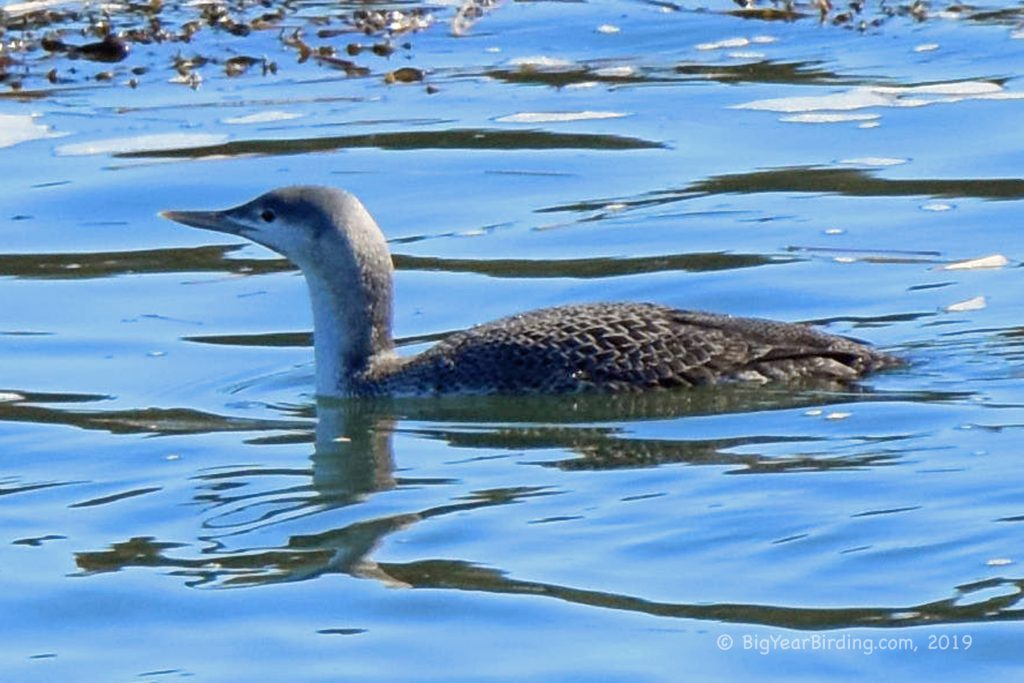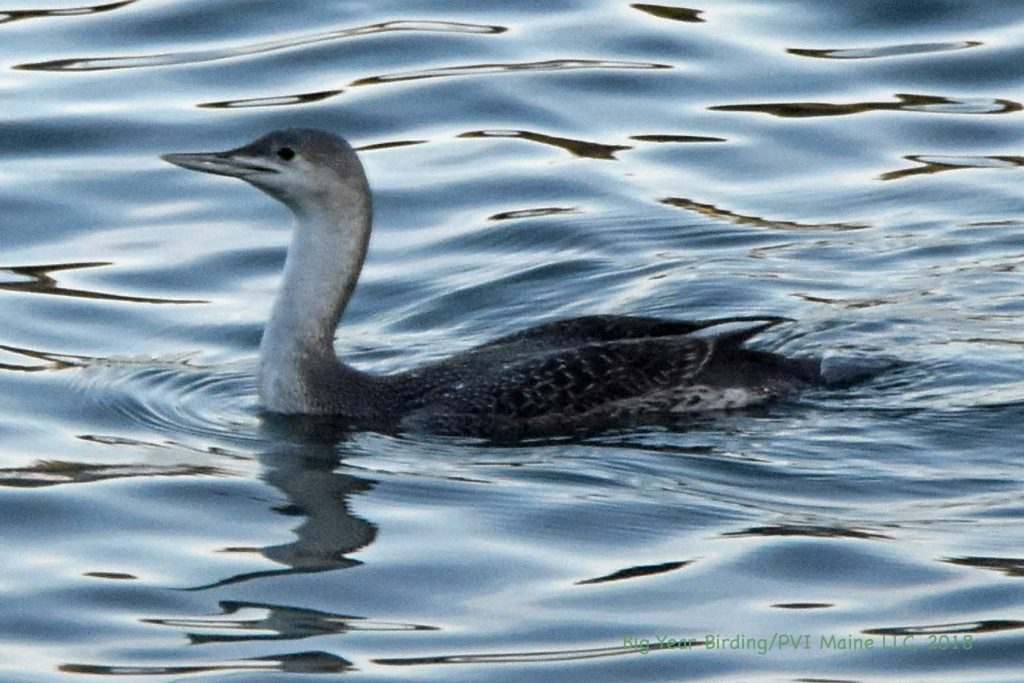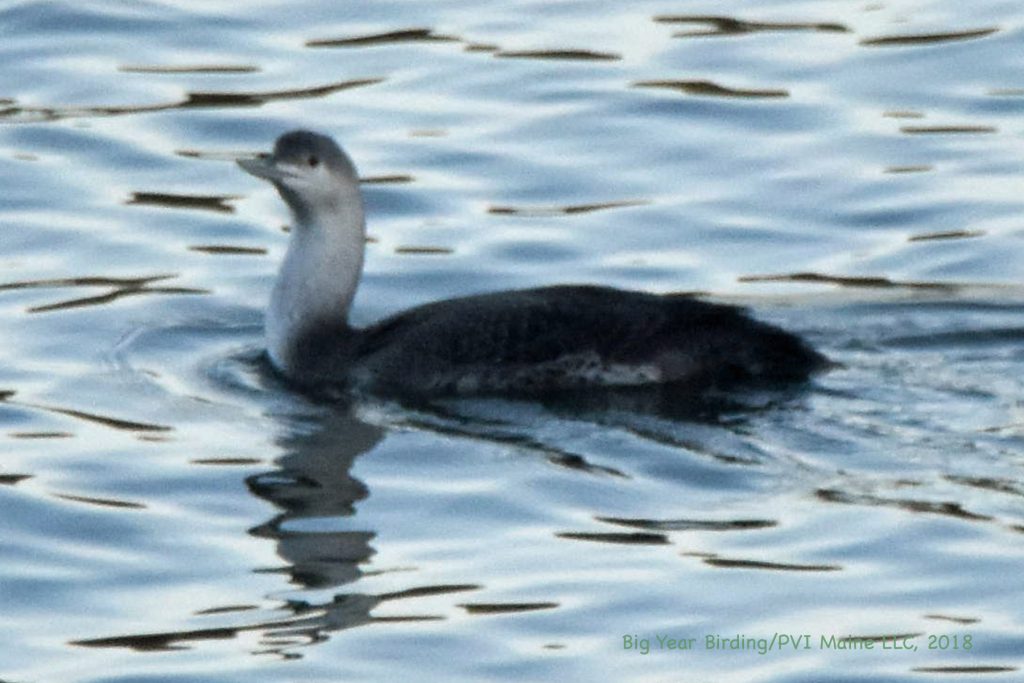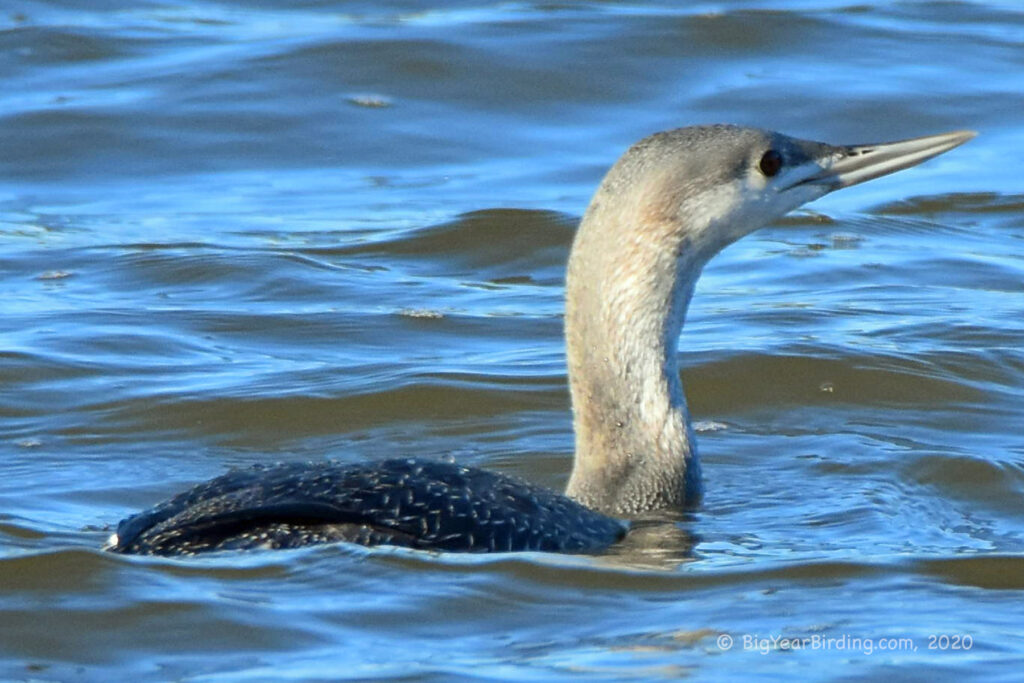The Red-throated Loon (Gavia stellata) is a medium-sized diving bird that belongs to the family Gaviidae. It is distributed throughout the northern hemisphere, breeding in the Arctic regions and wintering along the coasts of the North Atlantic and Pacific oceans. The Red-throated Loon measures around 23-29 inches in length, with a wingspan of 46-55 inches. It weighs between 2.2-4.4 pounds, with females being slightly smaller than males.

One of the most distinctive features of the Red-throated Loon is its red throat patch, which contrasts with its grayish-blue upperparts and white underparts. During breeding season, the throat patch becomes more prominent and can extend up to the cheeks. The head and neck are slender, and the bill is straight and pointed. In flight, the bird displays a distinctive triangular shape, with the head and neck held straight out in front and the legs trailing behind.
The Red-throated Loon is a long-distance migrant, traveling from its breeding grounds in the Arctic to wintering areas along the coasts of the North Atlantic and Pacific oceans. The migration takes place in September and October, with the birds returning to their breeding grounds in April and May. During migration, the Red-throated Loon can be seen flying in small groups or alone, often making stops along the way to rest and feed.
The Red-throated Loon is an expert swimmer and diver, with the ability to stay underwater for up to three minutes while foraging for small fish and invertebrates. It can also fly underwater, using its wings to propel itself through the water. The bird is typically found in coastal waters, but can also be seen on inland lakes and rivers during migration.

Overall, the Red-throated Loon is a beautiful and fascinating bird, with its striking red throat patch and impressive diving abilities. Its long-distance migration and ability to thrive in both marine and freshwater habitats make it an important and interesting species to study and observe.


